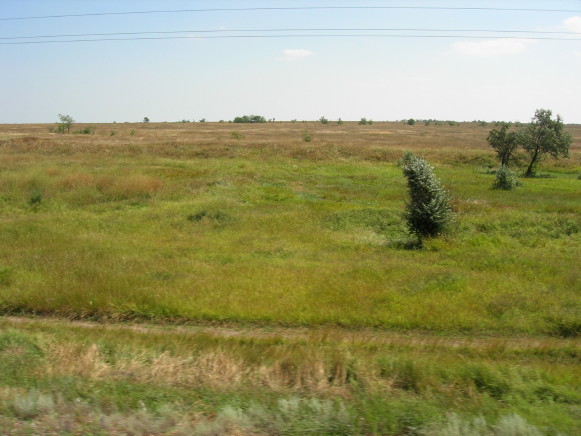Crimean Lowland
Crimean Lowland [Північнокримська рівнина; Pivnichnokrymska rivnyna]. (Map: Crimean Lowland.) Part of the Black Sea Lowland in Southern Ukraine, the Crimean Lowland lies in the northern Crimea between the Perekop Isthmus in the north and the foothills of the Crimean Mountains (which are located a bit north of the line Bakhchysarai–Simferopol–Teodosiia) in the south. The lowland constitutes about four-fifths of the area of the Crimean Peninsula. Geologically, the lowland is a part of the Black Sea Depression. Its base consists of Upper Cretaceous and Paleogene layers, and its surface of Neogene and Quaternary layers. The northeastern part of the lowland, which is adjacent to Syvash Lake, is the lowest and flattest part. The Tarkhankut Peninsula forms a higher (up to 178 m), undulating plain, with a steep shoreline 30–40 m high. This is a slightly elevated anticline. The northeastern part of the Kerch Peninsula presents a different landscape. This is a hilly region up to 190 m in elevation, consisting of ridges separated by valleys and depressions. It is built of limestone and soft clayey soils of the Tertiary period, which were folded in the Neogene. There are lakes, extensive stretches of solonets soils, and numerous muddy volcanos among the hills and along the coast.
The climate of the Crimean Lowland is similar to the climate of the steppes, except that it is somewhat warmer because the lowland is farther south. Winters are mild (the mean January temperature varies from 1°C in the southwest to -2°C in the northeast) with frequent, violent winds but little snowfall. Summers are hot (the July temperature fluctuates between 22.5°C and 24°C). Annual rainfall is 270–400 mm, and most of the rain comes in summer. The rainfall increases towards the south. Thus, the lowland is an area of drought. Its rivers are small and often dry up in summer. The largest river is the Salhyr River (232 km). The Tarkhankut Peninsula and Kerch Peninsula have no rivers at all. Artesian wells are the main source of irrigation water. The distribution of soils and plants is dependent on the amount of moisture. In the northeastern part, which is the driest part, salinized chestnut soils and solonets soils with a salified-wormwood flora are common. The northern part is covered with chestnut soils and a feather grass or fescue-feather-grass steppe. The southern part (and the central to some extent), which gets the most moisture, contains low-humus southern chornozem with a varied fescue-feather-grass steppe. About 60 percent of the primordial steppe has been put under cultivation and up to 30 percent is used for pasture.
Volodymyr Kubijovyč
[This article originally appeared in the Encyclopedia of Ukraine, vol. 1 (1984).]
